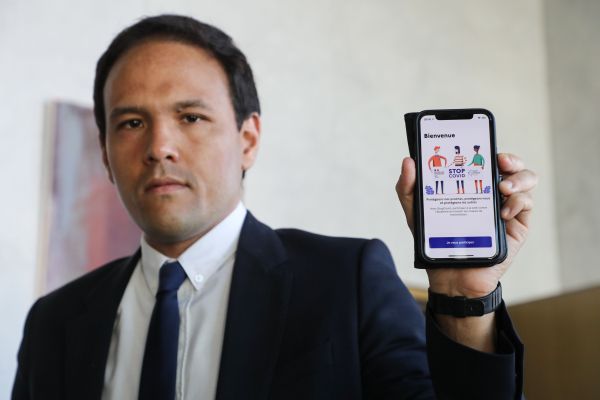France released StopCovid three weeks ago. The government is holding a press conference today to give an update on the app. In particular, this conference is a good opportunity to share some numbers.
Over the past three weeks, 1.9 million people downloaded the app on the App Store or Play Store. Out of those 1.9 million people, 1,814,048 users opened the app and activated StopCovid.
You can disable StopCovid and delete your personal data whenever you want; 23,953 people have deactivated the app over the past three weeks, and 460,000 people simply uninstalled the app.
Given that the app doesn’t ask you to register with your name and address, the government has little information about who’s using the app and where. The government will run surveys to learn more.
Over the last week alone, 190,000 people downloaded the app, but “tens of thousands” of people uninstalled it. The government says that people may feel like the coronavirus outbreak is over in France — but there are still new cases every day, so it’s far from over.
“The application is working well. In short, we can detect most contacts that we should detect,” France’s digital minister Cédric O said. “If I have one regret it’s obviously that it isn’t compatible with other European countries.”
Downloads are one thing. But StopCovid hasn’t led to a lot of notifications. Only 68 StopCovid users have declared that they’ve been diagnosed COVID-19-positive in the app. The server received 205 social interactions from those 68 cases.
In the end, StopCovid has only sent 14 notifications over the past three weeks.
“This isn’t the end of the story,” Cédric O said. “We keep improving the application.”
If you’re using StopCovid and you’re diagnosed COVID-19-positive, your hospital or testing facility will hand you a QR code or a string of letters and numbers. You can choose to open the app and enter that code to share the list of ephemeral IDs of people you’ve interacted with over the past two weeks.
The server back end then flags all those ephemeral IDs as belonging to people who have potentially been exposed to the coronavirus. On the server again, each user is associated with a risk score. If it goes above a certain threshold, the user receives a notification. The app then recommends you get tested and follow official instructions.
Among other things, the government says the app has managed a very small number of notifications because very few people mark themselves as COVID-19-positive in the app. That’s why testing facilities will send you a letter in addition to handing you a QR code in the coming weeks. This way, you get another reminder.
In the French areas with the most number of cases (“orange” and “red” zones), the government is going to make it easier to mark yourself as COVID-19-positive. For instance, a general practitioner will be able to tell you directly to flag yourself in the app.
“In their current states, European applications are not compatible with each other. Today, there’s some work in order to work on European interoperability but there’s no interoperability between Italian and German applications,” Cédric O said.
France isn’t relying on Apple and Google’s contact-tracing API. By taking German and Italian apps as an example, Cédric O wants to dismiss the idea that you have to use Apple and Google’s contact-tracing API to build a European contact-tracing app. Even if you’re using this API, you still need to adapt your app to make it work with other apps.
But it doesn’t mean that France’s contact-tracing app will ever be able to talk with other European apps at all. Inria CEO Bruno Sportisse said that the French development team is working on it. But it sounds like Inria wants to push a new iteration of its protocol, DESIRE.
“We’ve been working with Spanish and German teams to implement a proof of concept of that new protocol so that it could be released during the first half of July,” Sportisse said. More details on DESIRE and other European protocols from TechCrunch’s Natasha Lomas:
